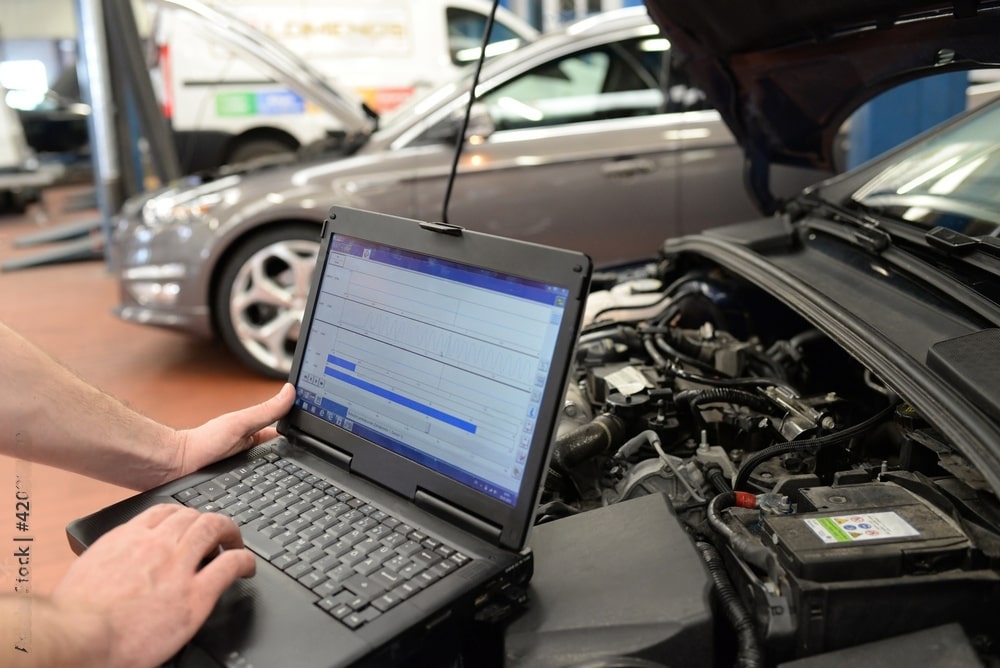With the remarkable evolution in the automotive industry, the advent of the car’s computer unit emerged, which directly controls the fuel injection unit of the car and contains a plethora of information such as the maximum allowed speed of the car and fuel consumption… etc. In this piece, we delve into the crucial information regarding car programming.
Car Computer Programming

The computer unit in the car began to appear with the emergence of electronic fuel injection, where fuel is injected at different ratios into the car’s engine using injectors. Here, the fewer the engine cycles, the less fuel is consumed. The car’s computer or engine control unit, is the mastermind behind the car, and without this unit, the engine will not function. For the engine to move, it needs steering signals, and it is the car’s computer that provides these signals. You find it connected to all the sensors scattered throughout the engine, which receive signals, thus moving the car’s engine. The car’s computer controls many operations, including:
- Fuel injection into the engine.
- Controlling the ignition system.
- Timing of opening and closing the engine valves.
- Controlling the balance preservation system.
- Controlling the launch and acceleration system.
- Control of the automatic transmission system.
- Controlling the pressure of the turbocharger if the car is equipped with this technology.
Car Programming
It’s a simple process carried out on the car’s computer to enhance the car’s performance and extract additional horsepower by modifying the information stored on electronic chips that can be reprogrammed. It also involves disabling some annoying systems, especially for speed enthusiasts, such as deactivating the cruise control program, for example.
How to Program a Car: Best Programming Methods
There are three main methods for car programming, all of which we’ll discuss below.
1. Reprogramming Electronic Chips
Electronic chips represent the electronic part of the car’s computer where all the car’s information is stored. One of the characteristics of these chips is that they are erasable and programmable, allowing for the modification of stored information. This process is done through specialized software for these chips. So, how do you go about modifying the programming of electronic chips?
- Each car model has its own computer with a unique code, and each computer has its own program where all the information is stored. If this program is not available, the programmer will not be able to reprogram or modify the car’s computer. Therefore, you need to install the program on your laptop and then connect the car to the computer through the dedicated port.
- After the connection is established, you can access the car’s computer and modify the programs installed on the car’s computer.
Here, you can make the following modifications:
- Increase fuel ratios.
- Modify ignition timing or ignition timing due to changes in fuel ratios.
- Increase engine revolutions.
- Deactivate the speed limiter.
- Modify the timing of the cooling fans.
- Coordinate the operation of additional fans only if additional fans are installed.
- Increase turbocharger pressure if the engine is equipped with turbocharger technology.
2. Electronic slide change
In this method, the chips specific to the car’s computer are replaced with new chips containing the desired modifications. Here, it is essential to consider the specification differences as chip specifications vary depending on the car model and the region it is intended for. For example, a BMW car with American specifications differs from the same car with European specifications. This method of reprogramming is preferable as you only need to replace the old chip with a new one programmed with the required specifications.
3. Changing the Car’s Computer
This method is extensively used for significant changes, such as equipping the engine with turbocharging devices, which significantly increases the air pressure entering the engine. Working on replacing the fuel pump with a larger one. The old computer of the car may not accommodate these significant modifications, so it is better to replace it with another one capable of accommodating the modifications.
